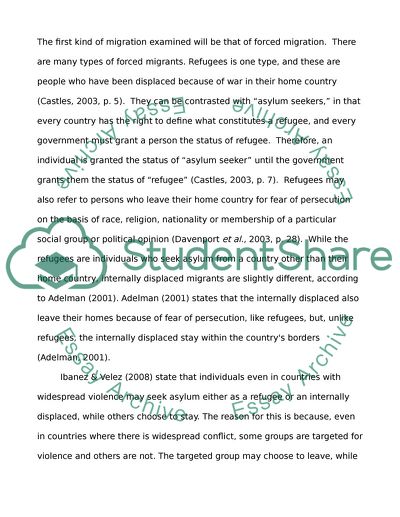Cite this document
(Forced Migration in the 21st Century Essay Example | Topics and Well Written Essays - 1500 words, n.d.)
Forced Migration in the 21st Century Essay Example | Topics and Well Written Essays - 1500 words. https://studentshare.org/macro-microeconomics/1582220-what-concepts-and-theories-best-capture-the-predicament-of-forced-migrants-in-the-21st-century
Forced Migration in the 21st Century Essay Example | Topics and Well Written Essays - 1500 words. https://studentshare.org/macro-microeconomics/1582220-what-concepts-and-theories-best-capture-the-predicament-of-forced-migrants-in-the-21st-century
(Forced Migration in the 21st Century Essay Example | Topics and Well Written Essays - 1500 Words)
Forced Migration in the 21st Century Essay Example | Topics and Well Written Essays - 1500 Words. https://studentshare.org/macro-microeconomics/1582220-what-concepts-and-theories-best-capture-the-predicament-of-forced-migrants-in-the-21st-century.
Forced Migration in the 21st Century Essay Example | Topics and Well Written Essays - 1500 Words. https://studentshare.org/macro-microeconomics/1582220-what-concepts-and-theories-best-capture-the-predicament-of-forced-migrants-in-the-21st-century.
“Forced Migration in the 21st Century Essay Example | Topics and Well Written Essays - 1500 Words”. https://studentshare.org/macro-microeconomics/1582220-what-concepts-and-theories-best-capture-the-predicament-of-forced-migrants-in-the-21st-century.


